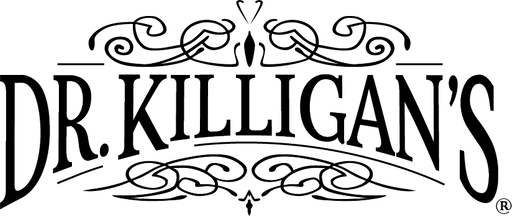Updated October 2, 2025
Dust mites are invisible house guests most of us would rather not host. They don’t bite, but they thrive in warm, humid spaces—especially in beds, upholstery and carpets. The good news: you can dramatically reduce their numbers with consistent, simple steps.
- Wash bedding weekly at ≥130°F (54°C); dry on high heat.
- Use zippered encasements on mattresses and pillows.
- HEPA vacuum carpets, rugs and upholstery 2–3×/week.
- Keep indoor RH under 50% (dehumidifier or A/C).
- Steam clean soft surfaces (contact steam ~130–140°F+).
- Avoid “instant kill” promises; focus on heat + moisture control.
Here’s what actually works—and what doesn’t—when it comes to managing dust mites..
What kills dust mites instantly?
The short answer to what kills them instantly: nothing truly instant and safe.

Despite what product labels or internet tips may suggest, there isn’t a spray or chemical that wipes out dust mites in a single shot. Reliable methods all come back to one principle: change their environment so they can’t thrive.
- Heat: The most effective. Washing bedding at 130°F (54°C) or higher and drying on high heat kills mites. Steam cleaning fabrics and upholstery at 130–140°F can also work.
- Freezing: For small items like plush toys or pillows, freezing at 0°F (–18°C) for 24–48 hours eliminates mites.
- Dry conditions: Dust mites need humidity to survive. Keeping your home at a relative humidity of under 50% makes it much harder for them to live and reproduce.
A note on sprays: Some dust mite sprays, often alcohol-based or essential oil-based, may temporarily reduce mite counts, but they aren’t lasting solutions and can exacerbate allergies. Think of them as supporting steps, not primary tools.
The key isn’t an “instant kill,” but consistent routines—hot washes, encasements, HEPA vacuuming and moisture control—that gradually reduce their presence.
Step-by-step: How to get rid of dust mites in bed & home
Getting rid of dust mites isn’t a one-time event—it’s an ongoing routine. Dust mites and their allergens tend to settle into fabrics rather than stay airborne. Regular washing and cleaning are the foundation for reducing allergen buildup—and for keeping your sleeping spaces fresher.
Here’s a clear plan you can follow, room by room:
Start with bedding (the biggest hotspot)
- Wash sheets, pillowcases and blankets weekly in hot water (≥130°F / 54°C).
- Dry them on the highest heat setting.
- If washing isn’t possible (for items like pillows or duvets), use a hot dryer cycle or place them in the freezer for 24–48 hours.
- Optional: Add tea tree, eucalyptus or spearmint oil to laundry. Studies suggest these may reduce mite levels, but they’re only a supporting step—never a substitute for heat.
Cover mattresses and pillows with encasements
- Use zippered, allergen-proof encasements—often called dust mite covers—on your mattress and pillows. A high-quality dust mite mattress cover and dust mite pillow covers create a barrier that prevents mites from burrowing in.
-
Wash the covers 2–4 times a year to maintain their effectiveness.

Vacuum floors and upholstery often
- Use a HEPA-filter model—sometimes marketed as a dust mite vacuum or a vacuum for dust mites—on carpets, rugs and upholstered furniture 2–3 times per week.
- Mop hard floors with a damp (not dry) cloth or mop—this traps dust instead of redistributing it.
Keep humidity under control
- Keep indoor relative humidity below 50% using air conditioning or a dehumidifier.
- Aim to keep rooms between 68–72°F (20–22°C), since dust mites thrive in warmer, more humid conditions.
- Fix leaks and ensure bathrooms and kitchens are well-ventilated.
Steam and simplify soft surfaces
- Steam clean curtains, cushions and sofas where possible.
- Limit "dust reservoirs" in bedrooms—heavy drapes, extra throw pillows or long-pile rugs can all harbor mites.
Wash or freeze toys and delicate fabrics
- Wash stuffed animals regularly on a hot cycle.
- For delicate items that can't be laundered, use the freezer method (0°F / –18°C for 24–48 hours).
- Keep in mind: Freezing won’t remove allergens—washing is the only way to rinse those out.
Done together, these steps don’t just remove mites—they make your home less welcoming to them over time.
Can dust mites bite?

No. Dust mites don’t bite, sting or burrow into skin.
They feed only on flakes of dead skin that naturally collect in bedding, upholstery and carpets. What people often call “dust mite bites” usually falls into one of two categories:
- Allergic reactions—Some people develop rashes—sometimes called a dust mite rash—or itchy, irritated skin from contact with dust mite allergens. These reactions may look like small red bumps, but they are not true bites.
- Other pests—Bed bugs, fleas or mosquitoes are the real culprits. Bed bug bites, for example, often appear in rows or clusters and may leave blood spots on sheets.
If you’re seeing distinct bite lines or raised welts, it’s almost certainly not dust mites. Check for bed bugs or fleas instead.
Quick recap:
- Dust mites = microscopic, don't bite.
- Bed bugs = visible, do bite, leave marks.
- Allergies = skin irritation without true bites.
Can you see dust mites? How big are they?
No. Dust mites are too small to see with the naked eye.
- Size: They measure about 0.2–0.3 millimeters in length. That’s smaller than a grain of sand—invisible without a microscope.
- Appearance: Photos you see online are microscope images, often color-enhanced to show details. In real life, they’re translucent and nearly invisible.
- What you do see: When people think they spot a dust mite, it’s usually dust, lint or fibers—not the mite itself.
If you think you see them at home, you won’t. Focus instead on prevention and cleaning routines.

Dust mite allergy basics
Although dust mites don’t bite, their presence can still cause problems. For many households, managing them becomes part of an overall dust mite allergy treatment plan. For sensitive individuals, proteins in dust mite waste can trigger allergy symptoms such as sneezing, runny nose, itchy eyes or skin irritation.
According to the American Lung Association, about four out of five homes in the U.S. have measurable dust mite allergens in at least one bed. If a pet sleeps in your room, it can be harder to know whether symptoms are caused by dust mites, pet dander or both.
Medical care should always come from a healthcare professional. At home, these practical steps can help reduce allergen exposure:

- Improve air quality: A HEPA air purifier captures airborne dust and allergens, keeping bedrooms fresher.
- Wash to remove allergens: Hot washing not only kills mites, it also rinses away the allergens they leave behind—something freezing alone can’t do.
- Prioritize bedrooms: Since you spend hours sleeping, start with the bed and surrounding fabrics.
- Declutter your space: Remove heavy drapes, extra rugs or fabric-covered items that trap dust. Limit knick-knacks, books and papers in sleeping areas.
- Dust smart: Use a microfiber or damp cloth to trap dust. Avoid dry cloths or feather dusters, which just push allergens back into the air.
- Refresh soft goods: Replace old pillows or mattresses if they’ve become long-term allergen reservoirs.
These steps won’t “cure” allergies, but they can make your sleeping spaces feel lighter, cleaner and easier to breathe in.
Final thoughts
Dust mites are stubborn, but they’re manageable. Keep the focus on routines that actually move the needle: hot-wash and high-heat dry, encase pillows and mattresses, HEPA-vacuum soft surfaces, lower humidity and steam-clean when you can. Over weeks, those habits cut populations and, just as important, rinse away allergen build-up.
If you’re dealing with rashes, congestion or breathing concerns, talk with a healthcare professional. At home, prioritize the bedroom first—where hours of contact add up—and keep surfaces simple and easy to clean.
A quick note from Dr. Killigan’s
Prefer plant-powered pest control? Dr. Killigan’s designs tools that help you reduce bugs without harsh chemistry—always safe when used as directed. Explore our lineup to support a cleaner, calmer home, starting with the spaces you sleep in.




















